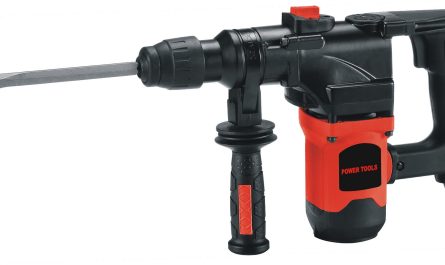Motorized control valves play a vital role in automated process control across various industries such as oil and gas, manufacturing, power generation, and others. By allowing precise control over flow rates and pressures of liquids and gases in pipelines and vessels, control valves help regulate critical process parameters like temperature, level, pressure, and flow
Types of Motorized Control Valves
There are different types of motorized control valves available depending on the application. Some common types include:
– Ball Valves: Ideal for on/off applications and throttling services. Features a round ball inside the valve body with a hole through the centre.
– Butterfly Valves: Suitable for throttling duty and open/close applications. Consists of a disc mounted on a rod that rotates 90 degrees to open or close flow.
– Diaphragm Valves: Often used in sanitary processes to prevent contamination. Features a flexible diaphragm that opens and closes flow using actuated stem movement.
– Gate Valves: Used for high-pressure throttling control. Has a wedge or tapered gate that slides into the valve body to shut off or control flow.
– Globe Valves: Commonly used for throttling applications involving liquids and gases. Contains a round or elongated plug rotated 90 degrees inside the globe-shaped valve body.
Each valve type has unique flow and pressure handling capabilities making them suitable for different process applications. Motorized actuation provides automated control over valves for remote or programmed operation.
How Motorized Control Valves Work
At the heart of a motorized control valve is an electric, pneumatic or hydraulic actuator attached to the main valve body. This actuator receives a control signal from a programmable logic controller (PLC) or distributed control system (DCS) to move the valve stem or disc accordingly.
Some key components include:
– Actuator: Provides torque and rotary motion needed to open or close the valve. Common types are electric actuators, pneumatic actuators and hydraulic actuators.
– Positioner: Senses valve stem position and provides feedback to control loop. Some advanced versions also incorporate communications capabilities.
– Microprocessor: Receives setpoint from controller and compares to feedback to determine correct actuator motion.
On a command, the actuator turns the valve stem or disc to either restrict or allow flow based on the feedback position loop. Precise motion control enables accurate and repeatable regulation of flow and pressure processes remotely.
Applications of Motorized Control Valves
Here are some industries and applications where motorized control valves play a vital automated control role:
Oil & Gas Industry
– Regulating flow in pipelines
– Controlling production rig equipment
– Metering flow to processing units
– Isolating wells/sections for maintenance
Power Plants
– Boiler feedwater control
– Steam temperature regulation
– Fuel flow control
– Turbine bypass systems
Water Treatment Facilities
– Chemical dosage control
– Filter backwashing cycles
– blended water flow balancing
– Pressure regulation
Manufacturing Plants
– Material feeding systems
– Conveying melted metals/plastics
– Cooling fluid circulation
– Boiler steam outputs
HVAC Systems
– Temperature zoning
– Fan speed regulation
– Heating/cooling loops
– Humidifier filling
Advantages of Motorized Control Valves
Compared to manually operated valves, motorized control valves offer significant benefits for process automation:
– Remote and automated operation from a centralized control room.
– Precise modulation of flow based on setpoint vs feedback signals for self-regulating control loops.
– Programmable operation based on time or process variables for sophisticated control schemes.
– Tight shut-off capabilities for critical services requiring high integrity.
– Durability and reliability for continuous duty applications.
– Automatic position feedback for verification in safety instrumented systems.
– Integrated communications for fieldbus and industrial protocol connectivity.
– Configuration and diagnostic capabilities using smart positioners.
These advantages help processes achieve tighter tolerances, use energy more efficiently, enhance personnel safety, and enable data logging/remote monitoring for predictive maintenance.
In summary, motorized control valves have become indispensable for automated process industries seeking precise, repeatable and reliable control over critical flows and pressures. By allowing remote configurable adjustment from centralized control systems, they help optimize operations, improve yields, enhance safety, and reduce waste. As process control and instrumentation continues to advancedigitally, motorized valves will remain a workhorse technology at the heart of integrated automation architecture.
*Note:
1. Source: Coherent Market Insights, Public sources, Desk research
2. We have leveraged AI tools to mine information and compile it



